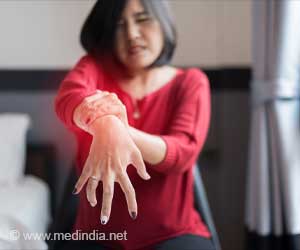
‘While watching traumatic movies, endorphins are produced by the brain, chemicals which make us feel good, reduce pain and increase group bonding.’
Tweet it Now
Earlier studies have shown that laughing, dancing and working in a team can increase social bonding and heighten pain tolerance through an endorphin boost. “All of those things, including singing and dancing and jogging and laughter, all produce an endorphin kick for the same reason - they are putting the musculature of the body under stress,” said Dunbar.
“It has turned out that the same areas of the brain that deal with physical pain also handle psychological pain.”
The researchers described in the journal Royal Society Open Science how they set out to unpick whether our love of storytelling, a device used to share knowledge and cultivate a sense of identity within a group, is underpinned by an endorphin-related bonding mechanism.
The study involved 169 participants who were split into groups composed largely of people they did not know, and showed them the traumatic drama Stuart: A life backward which is based on the true story of a disabled, homeless drug addict and alcoholic.
Advertisement
Before and after watching the movies, the participants were asked to indicate through various scales their mood and feelings of belonging towards other members of their group.
Advertisement
“What one wants to know is does your response to one film change in a different way to your response to the other,” said Dunbar.
The findings showed that those who watched the traumatic movie had a strong negative change to their mood, while those who watched the documentaries showed only a slight change in both positive and negative markers, which the researchers attribute to boredom.
On an average, the pain tolerance of those who watched the traumatic movie increased by 13.1%, whereas those who watched the documentaries experienced a decrease in pain threshold of 4.6%.
Traumatic film boosted pain thresholds by nearly 18% compared to the control scenario. The participants who showed an increase in pain tolerance also had increased feelings of group bonding, despite their mood becoming less positive.
But only some participants showed an emotional response to Stuart: A life backward. Some viewers showed a decrease in pain threshold, together with no change in their social bonding.
“This is probably true of everyday life - some people get very moved emotionally by some event that happens while other people look blankly on and say ‘what is the fuss?’” said Dunbar. The results suggest that watching traumatic films increases endorphin levels in the brain, boosting pain tolerance and increasing the sense of bonding with others in the group.
Source-Medindia












